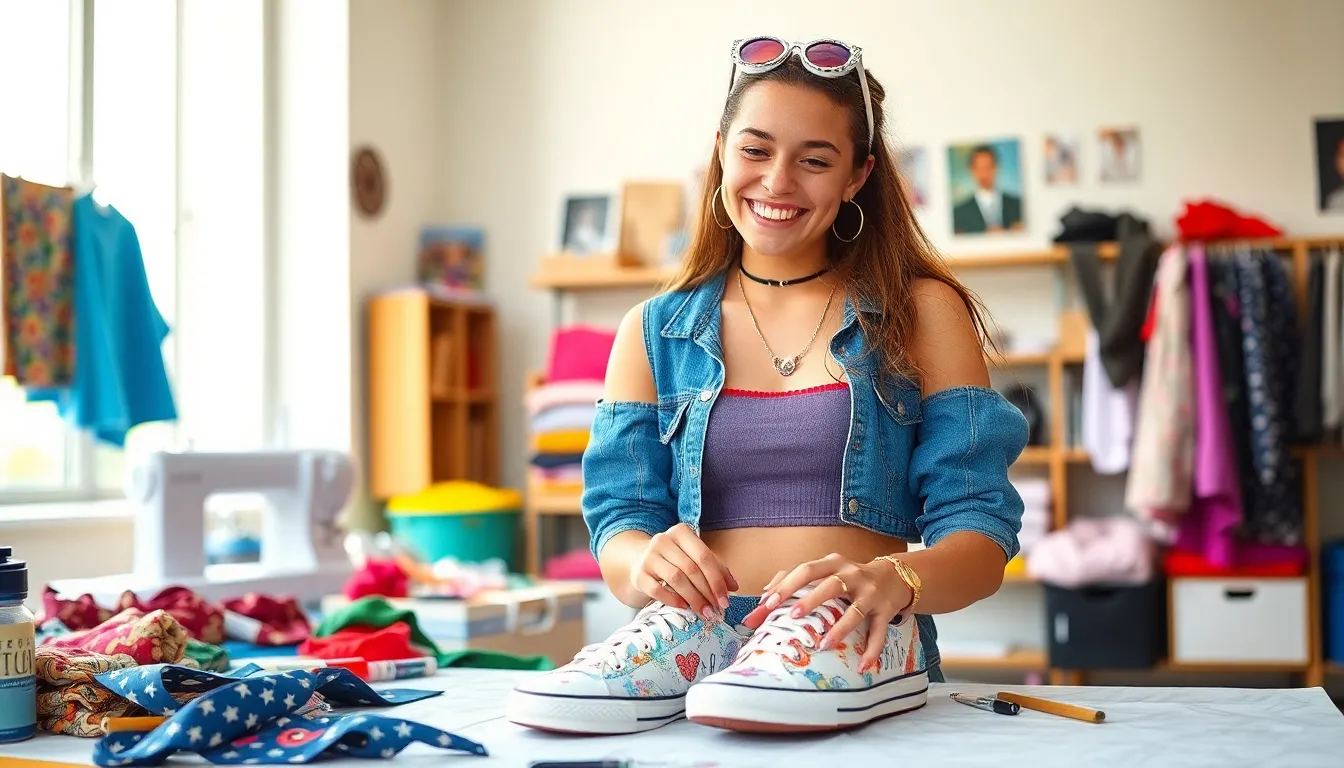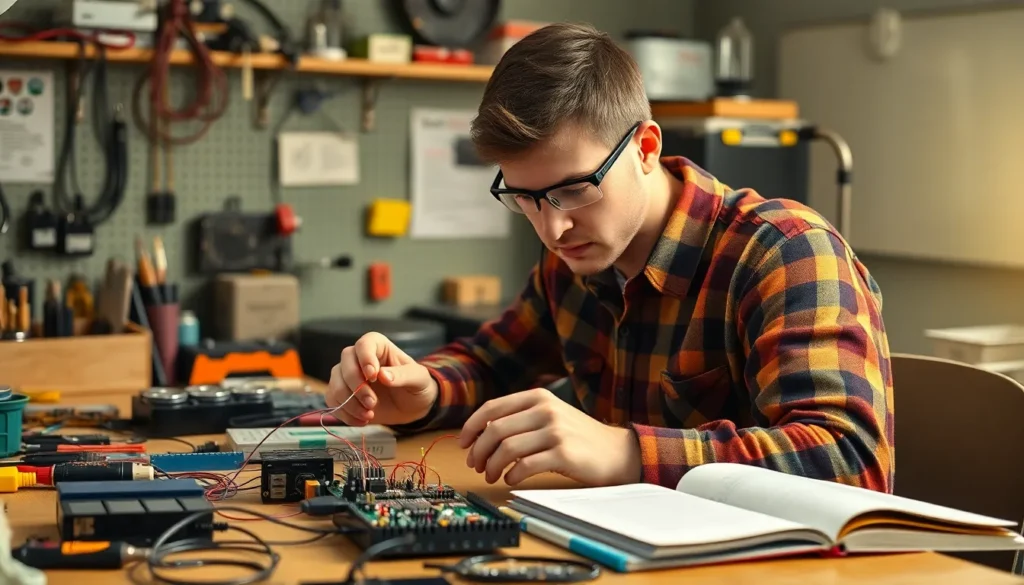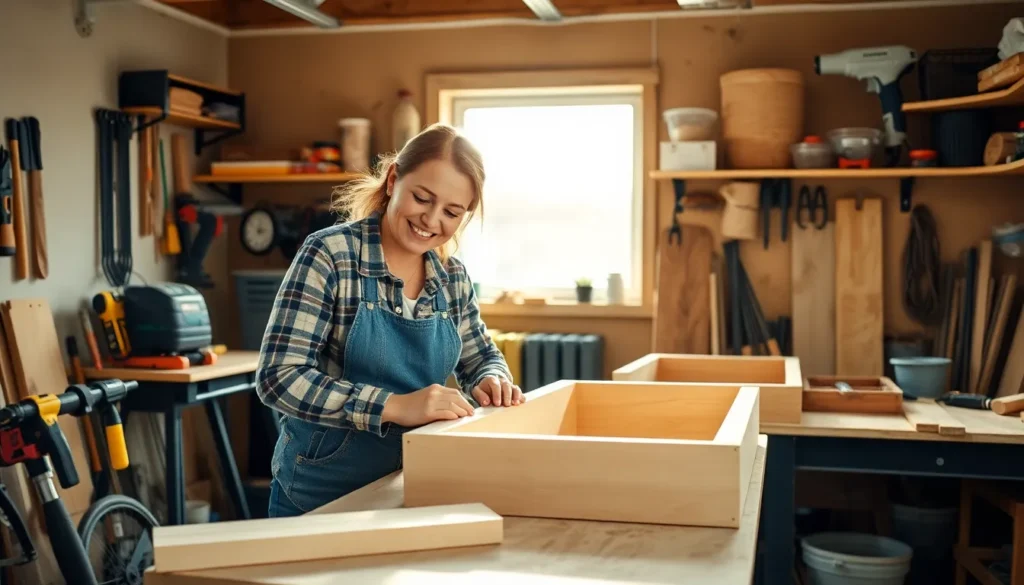In a world where fashion trends come and go faster than a TikTok dance challenge, why not take matters into your own hands? DIY fashion projects offer a fun and creative way to express personal style while saving money. Who needs a designer label when you can turn an old T-shirt into a trendy tote bag or transform a pair of jeans into chic shorts?
DIY Fashion Projects
DIY fashion projects offer a unique opportunity to express individuality and creativity. Individuals engage in these projects to repurpose old clothing into fresh styles. Transformations are common, such as converting T-shirts into tote bags or turning jeans into stylish shorts. This hands-on approach allows people to customize their wardrobes according to personal preferences.
Many choose DIY fashion projects to save money. Creating unique pieces at home often costs significantly less than purchasing new items from designer brands. Budget-conscious shoppers find that sourcing materials, like secondhand clothes or fabric remnants, makes DIY projects even more affordable.
Other benefits include the satisfaction and sense of accomplishment that come from creating something by hand. Progressing from concept to finished product fosters a deep connection to the fashion piece. Additionally, participating in DIY fashion can lead to skill development, enhancing sewing, cutting, or crafting abilities.
Community engagement often accompanies DIY fashion projects. Many enthusiasts share their ideas and creations on social media platforms or crafting blogs, fostering inspiration and collaboration. Online tutorials provide guidance for those interested in exploring new techniques.
Sustainability represents another advantage of DIY fashion projects. By repurposing existing materials, individuals contribute to reducing waste in the fashion industry. This eco-friendly approach resonates with those concerned about environmental impact and promotes conscious consumerism.
Overall, DIY fashion projects facilitate self-expression, skill development, and environmental consciousness. These initiatives empower individuals to take fashion into their own hands, cultivating a personal style that reflects their unique identity.
Popular DIY Fashion Projects

DIY fashion projects offer diverse possibilities for creativity and self-expression. Individuals can explore various ways to enhance their wardrobe while practicing sustainability.
Upcycling Old Clothes
Transforming old clothes into fresh designs stands as a popular choice among DIY enthusiasts. Individuals might convert oversized shirts into trendy crop tops or turn jeans into fashionable skirts. Simple embellishments like patches or fabric paint can breathe new life into garments. Many people also choose to mix different fabrics, creating unique patchwork pieces. This approach not only saves money but also minimizes waste, aligning with eco-friendly practices.
Creating Customized Accessories
Crafting personalized accessories provides an excellent outlet for creativity. Individuals often design unique jewelry using materials like beads or repurposed items. Customized bags, adorned with fabric scraps or embroidery, showcase personal style. Many also experiment with hair accessories, such as headbands and scrunchies, to match their outfits. These projects encourage personal expression and allow creators to showcase individuality through one-of-a-kind pieces.
Designing Unique Footwear
Designing unique footwear presents an exciting challenge for DIY fashion enthusiasts. Sneakers can undergo makeovers with fabric paint, glitter, or even fabric overlays. Individuals frequently add custom details like laces or patches that reflect their style. Flip-flops can receive a fresh look with decorative straps or embellishments. These personalized touches not only elevate the overall look but also ensure that footwear stands out in any crowd.
Essential Tools And Materials
Gathering the right tools and materials is crucial for successful DIY fashion projects. Essential items can enhance creativity and streamline processes.
Basic Sewing Supplies
Threads in various colors serve as a fundamental need for any sewing task. Needles in different sizes accommodate various fabric thicknesses. Fabric scissors must maintain sharpness for clean cuts. A measuring tape ensures accurate dimensions when altering garments. Pins hold pieces together during assembly, providing stability before sewing. Patterns or templates guide designs, simplifying the process. Fabric marker or chalk can help mark cutting lines without damaging materials.
Crafting Tools For DIY Projects
Cutting mats offer a protective surface for cutting fabric and are essential for preserving other work surfaces. Rotary cutters provide precision when slicing through multiple layers. Hot glue guns work well for embellishments or quick fixes, adding versatility. Craft knives enable intricate detailing on projects requiring fine cuts. Rulers assist in measuring and straightening edges, which is particularly useful for accessories. A sewing machine significantly expedites sewing tasks, ensuring sturdiness and longevity.
Tips For Successful DIY Fashion
Successfully navigating DIY fashion projects requires planning and skill enhancement. Keeping organized and focused makes a significant difference in the creative process.
Project Planning And Design
Effective project planning lays the groundwork for success. Start by setting clear goals for the outcome, such as a garment or accessory. Identify materials by listing necessary supplies and sourcing secondhand items for sustainability. Sketch a design to visualize the final product, allowing for adjustments as needed. Establish a timeline that provides ample time for each step. Allocate time for preparing, cutting, sewing, and finishing touches. Prioritize steps to streamline the process, ensuring a satisfying and efficient experience.
Techniques To Enhance Your Skills
Enhancing skills boosts confidence and improves results in DIY projects. First, practice basic sewing techniques to establish a solid foundation. Familiarity with various stitches, such as straight and zigzag, increases versatility. Experiment with fabric manipulation techniques like gathering, pleating, or dyeing to add unique flair. Watching online tutorials offers visual guidance and inspiration. Engage with local crafting communities, where shared knowledge can foster growth. Seeking feedback on completed projects helps refine skills and build connections.
Conclusion
Embracing DIY fashion projects opens the door to a world of creativity and self-expression. Individuals can not only refresh their wardrobes but also develop valuable skills along the way. The satisfaction derived from transforming old garments into unique pieces is unmatched.
By engaging with like-minded enthusiasts and sharing creations, they foster a sense of community that fuels inspiration. The eco-friendly aspect of upcycling further enhances the appeal of DIY fashion, making it a responsible choice in today’s consumer-driven world.
With the right tools and a willingness to experiment, anyone can embark on this fulfilling journey. DIY fashion isn’t just a trend; it’s a lifestyle that empowers individuals to showcase their personal style while making a positive impact.


